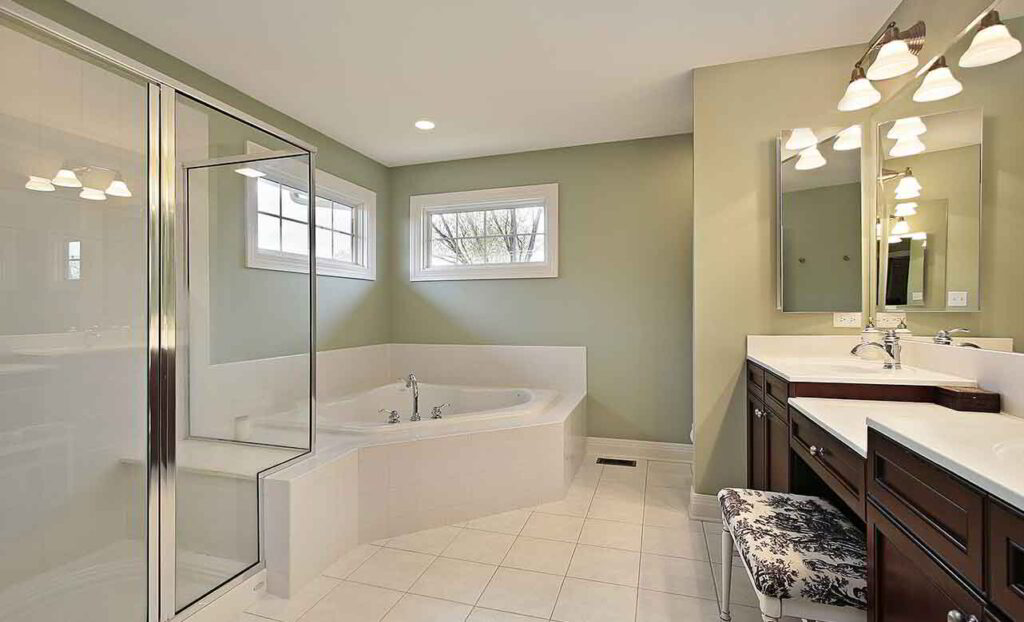Although the bathroom occupies a small space in your house, it accommodates numerous fittings and fixtures. A typical bathroom consists of a shower system (including a tub and toilet seat), faucets, pipework, and fittings. These bathroom components, or fixtures, are an essential part of its setup. Therefore, ensuring that they look squeaky clean at all times and remain in perfect working condition is imperative.
Consider a bathroom faucet for example. Apart from some discomfort or annoyance that you may feel because of the water drop sounds from a leaky faucet, certain bathroom stains and discoloration also cause some form of irritation. Because bathroom wares age over time and they are always in contact with water, there is a tendency for them to develop rust. This may occur on the bathroom fixture or in the internal walls of the piping. There is also the chance for bacteria and limescale build-up, especially when it lacks proper maintenance care.
So, before it gets to the point where the quality of water is affected or when something minor results in major replacements, how can you protect your bathroom fixtures and plumbing?
Common bathroom problems & solutions
Bathroom and toilet rust stains are quite common, especially in areas where hard water is supplied. This hard water contains certain impurities like calcium and magnesium. When accumulated, these elements combine with sulfates, bicarbonates, and chlorides to form insoluble mineral salts. The salts ultimately cause corrosion in the form of rust and eventually become visible on tubs, sinks, faucets, and other bathroom surfaces.
Faucet
- Rust
Most metal bathroom faucets, especially those made of brass and copper, are prone to corrosion when exposed to water, oxygen, and carbon dioxide. This corrosion produces bathroom rust stains (a reddish-brown scale) that are often visible on both the inside and outside surface of the bathroom faucet. When this occurs, removing faucet rust stains in the bathroom becomes inevitable.
- Scale build-up
Hard water also harms pipes and bathroom installations. Debris and limescale pile up may block the water pipe and leave ugly looking stains on bathroom faucets. These deposits are not just unpleasant. They can also clog and damage the seal the bathroom fixture, which could lead to clogged bathroom pipes and leaks that can cause even more damage.
- Frequent repairs
Apart from corrosion, other causes of leaky bathroom faucets, including mineral deposits on certain installation parts and defective washers or gaskets, can prompt bathroom fixtures to get damaged too often. Since the bathroom faucet is exposed to running water and moisture constantly, the situation should not go unattended once the issue has been noticed. This will help to prevent permanent damage or frequent repairs of leaky faucet.
Toilet
- Bacteria
Unclean bathroom diseases are one of the early signs that you have a bathroom that is infested by bacteria. Not just the obvious spots of your bathroom space like the floor and toilet seat but also the tap handles, plughole, sink, and bathtub. According to research, the sink has the highest number of Colony-Forming Units (about 50,000 CFUs). E.coli, Streptococcus, and Salmonella are the most common types of bathroom bacteria. They are primarily caused by neglecting proper bathroom hygiene. So, just as devotion to personal hygiene is paramount, keeping the bathroom clean and spotless is something that must be done. But the truth is, even a clean surface can still harbor germs, which is why using a good disinfectant is useful.
- Rust stains
While it might sound a bit stressful, constant bathroom cleaning is an effective preventive approach to protecting your bathroom and toilet from soap and rust stains, and it doesn’t take much energy. Simply wipe the surface in your bathrooms with a clean towel regularly or after each time you use the bathroom. By doing this, you protect the bathroom facility from rust stains. It can also help shield against prolonged contact with hard water, which would have reacted with the surface.
- Tub
Rusty water stains
By now, you must have noticed that rust and metals go hand-in-hand. For example, leaving any metallic item on a wet tub will form rust and stain the surface. So, if you happen to be in the habit of leaving metal cans on your tub, perhaps you should consider breaking the habit or substituting the item with plastic can products. Simply put, avoid keeping metal items on moist surfaces.
- Scale build-up
Since hard water contains mineral contents that can react with your faucet, toilet, and tub, getting a home water softener installed is another great way to protect your bathroom fixtures from rust stains. Try installing a water softener or iron filter to solve this issue. The role of the softener is to filter the hard water and rid it of those mineral deposits before it gets to the filter or leaves the tap. Additionally, installing a water softener makes all of your plumbing appliances last longer.
Useful tips on how to protect bathroom fixtures
Proper bathroom ventilation
Sometimes, the reason why toilet and bathroom surfaces are plagued with stains is that enough air does not penetrate the bathroom. Ventilation helps to keep your bathroom dry and moisture-free, which will further reduce the possibility of rusty water stains forming on the surface of your bathtub, sink, and shower.
Water softeners prevent dirty water spots
If you look at it critically, water will always be present on bathroom fixtures. So if you rely on chrome and related metals for your bathroom fixtures, one problem you may often encounter is decaying coloration. In this case, perhaps an upgrade will save you a lot of time and money in the long run because cleaning doesn’t restore its shine. By switching to stainless steel bathroom fixtures, you won’t have to worry much about rust stains forming overtime. While stainless steel might seem expensive at first, the value you get and the future stress it saves you from is worth it.
Water softeners prevent ugly water stains
White minerals, soap scum or scales may begin to build up on the surfaces, which leaves behind stains and spots. To protect them, preheat the surface with white vinegar and wipe with a damp sponge (or toilet brush for the toilet bowl). Then rinse with clean water afterward. The vinegar helps to breakdown the minerals, kills the bacteria, deodorizes the bathroom space, and cleans the surface.
Final thoughts on using a water softener to protect your bathroom
Protecting bathroom fixtures and plumbing can save you from needing to upgrade due to ugly stains or malfunctions like a leaky faucet due to hard water. When looking for the root of the problem, water softeners and iron filters are two products that are essential to address the hard water issue. Contact Palm Beach Water Purification to learn more.
As you can see, there is a lot of issues around the home that is caused by hard water. We have provided you with all the damages that a water softener prevents. Call us at 561-801-7337 and start protecting your home and love ones.

